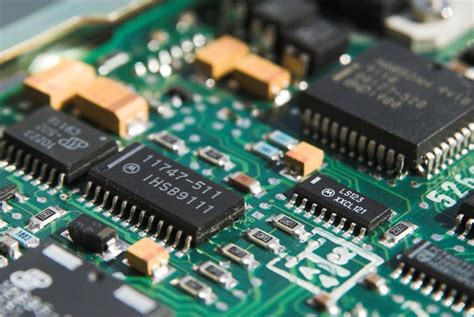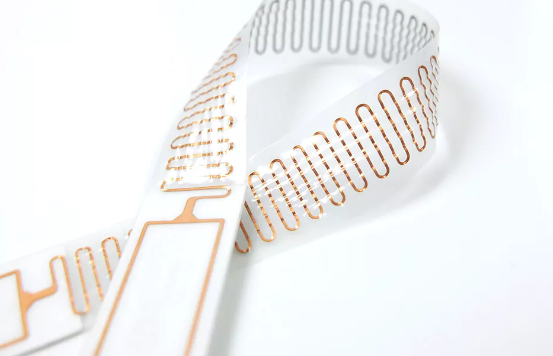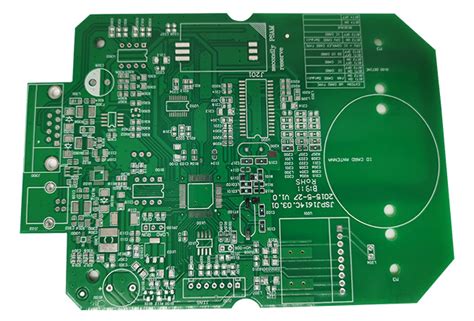Buy pcb board
Top Tips for Choosing the Right PCB Board for Your Project
When embarking on an electronics project, selecting the right printed circuit board (PCB) is a critical decision that can significantly impact the success of your endeavor. The PCB serves as the foundation for your electronic components, providing both mechanical support and electrical connections. Therefore, understanding the key factors to consider when choosing a PCB board is essential for ensuring optimal performance and reliability.
To begin with, it is important to consider the type of PCB that best suits your project requirements.
PCBs come in various types, including single-sided, double-sided, and multi-layer boards. Single-sided PCBs are the simplest and most cost-effective option, featuring components on one side and a conductive layer on the other. They are ideal for low-density designs. Double-sided PCBs, on the other hand, have conductive layers on both sides, allowing for more complex circuitry. Multi-layer PCBs, which consist of multiple layers of conductive material separated by insulating layers, are suitable for high-density and high-performance applications. Therefore, assessing the complexity and density of your project will guide you in selecting the appropriate type of PCB.
In addition to the type of PCB, the material used in its construction is another crucial consideration.
The most common material is FR-4, a fiberglass-reinforced epoxy laminate that offers a good balance of performance and cost. However, for projects requiring higher thermal or electrical performance, materials such as polyimide or Rogers may be more appropriate. These materials provide superior heat resistance and electrical properties, albeit at a higher cost. Consequently, evaluating the specific needs of your project in terms of thermal management and electrical performance will help you choose the right material.
Furthermore, the thickness of the PCB is an important factor that can affect both the mechanical strength and the electrical performance of the board.
Standard PCB thicknesses range from 0.8mm to 1.6mm, but custom thicknesses are available for specialized applications. Thicker boards offer greater mechanical strength and can support heavier components, while thinner boards are more flexible and suitable for compact designs. Therefore, considering the mechanical and spatial constraints of your project will aid in determining the appropriate thickness.
Another key aspect to consider is the surface finish of the PCB, which protects the exposed copper circuitry and provides a solderable surface for component attachment.
Common surface finishes include HASL (Hot Air Solder Leveling), ENIG (Electroless Nickel Immersion Gold), and OSP (Organic Solderability Preservatives). Each finish has its advantages and limitations; for instance, HASL is cost-effective but may not be suitable for fine-pitch components, while ENIG offers excellent surface planarity and is ideal for complex designs. Thus, understanding the specific requirements of your components and assembly process will guide you in selecting the appropriate surface finish.
Finally, it is essential to consider the manufacturer’s capabilities and quality standards.
Choosing a reputable manufacturer with a proven track record ensures that your PCB will be produced to the highest quality standards, minimizing the risk of defects and failures. Additionally, manufacturers with advanced capabilities can offer a wider range of options in terms of materials, finishes, and design complexities, providing greater flexibility for your project.
In conclusion, selecting the right PCB board for your project involves careful consideration of several factors, including the type, material, thickness, surface finish, and manufacturer capabilities. By thoroughly evaluating these aspects, you can ensure that your PCB will meet the specific needs of your project, ultimately contributing to its success.

Understanding the Different Types of PCB Boards Available in the Market
Printed Circuit Boards (PCBs) are the backbone of modern electronic devices, serving as the foundation upon which electronic components are mounted and interconnected. As technology continues to advance, the variety of PCB boards available in the market has expanded, catering to diverse applications and requirements. Understanding the different types of PCB boards is crucial for making informed purchasing decisions, whether for personal projects or large-scale manufacturing.
To begin with, single-sided PCBs are the most basic type, featuring a single layer of substrate material with conductive copper on one side.
These boards are cost-effective and easy to manufacture, making them ideal for simple electronic devices such as calculators and power supplies. However, their limited complexity restricts their use in more advanced applications. Transitioning to a more sophisticated option, double-sided PCBs have conductive copper layers on both sides of the substrate. This design allows for more complex circuits and is commonly used in applications like lighting systems and automotive electronics.
Moving further into complexity, multi-layer PCBs consist of three or more layers of conductive material, separated by insulating layers.
These boards are essential for high-density applications, such as computers and telecommunications equipment, where space is at a premium. The additional layers enable more intricate circuit designs, allowing for greater functionality and performance. However, the manufacturing process for multi-layer PCBs is more complex and costly, which can be a consideration for budget-conscious projects.
In addition to the number of layers, the material used in PCB construction also plays a significant role in determining the board’s suitability for specific applications.
For instance, rigid PCBs are made from solid substrate materials like fiberglass, providing durability and stability. These boards are widely used in consumer electronics and industrial equipment. Conversely, flexible PCBs are constructed from materials like polyimide, allowing them to bend and conform to different shapes. This flexibility makes them ideal for applications where space constraints or movement are factors, such as in wearable technology and medical devices.
Furthermore, rigid-flex PCBs combine the benefits of both rigid and flexible boards, offering a hybrid solution that can be particularly advantageous in complex electronic assemblies.
These boards provide the strength and reliability of rigid PCBs while allowing for the flexibility needed in certain areas of the design. This combination is often utilized in aerospace and military applications, where performance and reliability are paramount.
Another important consideration is the type of surface finish applied to the PCB, which can impact both performance and longevity.
Common finishes include HASL (Hot Air Solder Leveling), ENIG (Electroless Nickel Immersion Gold), and OSP (Organic Solderability Preservatives). Each finish has its advantages and disadvantages, such as cost, ease of soldering, and environmental impact, which should be evaluated based on the specific requirements of the project.
In conclusion, the variety of PCB boards available in the market today offers solutions for a wide range of applications, from simple consumer electronics to complex industrial systems. By understanding the different types of PCBs, including their construction, materials, and finishes, buyers can make informed decisions that align with their technical needs and budget constraints. As technology continues to evolve, staying informed about the latest developments in PCB technology will be essential for anyone involved in the design and production of electronic devices.

How to Buy High-Quality PCB Boards Without Breaking the Bank
When it comes to purchasing high-quality printed circuit boards (PCBs) without straining your budget, a strategic approach is essential. The process of buying PCBs involves several critical considerations that can significantly impact both the quality and cost-effectiveness of your purchase. To begin with, understanding your specific requirements is paramount. Clearly defining the specifications, such as the number of layers, material type, thickness, and surface finish, will help you communicate effectively with suppliers and avoid unnecessary expenses. By having a detailed blueprint of your needs, you can prevent costly revisions and ensure that the final product aligns with your expectations.
Once you have a clear understanding of your requirements, the next step is to research potential suppliers.
It is advisable to explore a range of manufacturers, both local and international, to compare prices and services. Online platforms and industry forums can be valuable resources for gathering information and reviews about different suppliers. Additionally, reaching out to industry peers for recommendations can provide insights into reliable manufacturers. While cost is a significant factor, it is crucial to balance it with quality. Opting for the cheapest option may lead to subpar products that could incur higher costs in the long run due to failures or the need for replacements.
Furthermore, requesting samples from potential suppliers can be an effective way to assess the quality of their products.
By examining these samples, you can evaluate the craftsmanship, material quality, and adherence to specifications. This step is particularly important if you are considering a new supplier. It allows you to make an informed decision based on tangible evidence rather than relying solely on claims or promises. Moreover, establishing a relationship with a supplier who is willing to provide samples demonstrates their confidence in their product and their commitment to customer satisfaction.
In addition to evaluating samples, it is beneficial to inquire about the supplier’s manufacturing processes and quality control measures.
Understanding how a supplier ensures the reliability and durability of their PCBs can provide peace of mind and assurance of quality. Reputable manufacturers often have certifications and adhere to industry standards, which can serve as indicators of their commitment to excellence. Furthermore, discussing lead times and delivery schedules is crucial to avoid unexpected delays that could disrupt your project timeline.
Negotiating terms with suppliers can also play a significant role in managing costs.
Many manufacturers are open to discussions regarding pricing, especially for bulk orders. Building a long-term relationship with a supplier can lead to favorable terms and discounts over time. Additionally, considering alternative materials or design adjustments that do not compromise functionality can result in cost savings. Engaging in open communication with your supplier about budget constraints and exploring flexible solutions can lead to mutually beneficial outcomes.
Finally, staying informed about market trends and technological advancements can provide opportunities for cost savings.
As the PCB industry evolves, new materials and manufacturing techniques may offer more affordable options without sacrificing quality. By keeping abreast of these developments, you can make informed decisions that align with both your technical requirements and budgetary constraints. In conclusion, purchasing high-quality PCB boards without breaking the bank requires a comprehensive approach that encompasses understanding your needs, researching suppliers, evaluating quality, negotiating terms, and staying informed about industry trends. By following these guidelines, you can achieve a balance between cost and quality, ensuring the success of your projects.

The Future of PCB Boards: Trends and Innovations to Watch
The future of printed circuit boards (PCBs) is poised for significant transformation, driven by rapid technological advancements and evolving industry demands. As the backbone of modern electronic devices, PCBs are integral to the functionality and efficiency of countless applications, from consumer electronics to industrial machinery. Consequently, understanding the emerging trends and innovations in PCB technology is crucial for businesses and engineers seeking to stay ahead in a competitive market.
One of the most notable trends in the PCB industry is the push towards miniaturization.
As electronic devices become increasingly compact, there is a growing demand for smaller, more efficient PCBs. This trend is particularly evident in the consumer electronics sector, where devices such as smartphones, wearables, and IoT gadgets require highly compact and densely packed circuit boards. To meet these demands, manufacturers are exploring advanced materials and fabrication techniques, such as high-density interconnect (HDI) technology, which allows for more components to be placed on a smaller board area. This not only enhances the performance of the device but also reduces its overall size and weight.
In addition to miniaturization, the integration of flexible and rigid-flex PCBs is gaining traction.
These innovative designs offer significant advantages in terms of versatility and durability, making them ideal for applications where traditional rigid boards may fall short. Flexible PCBs can be bent and folded to fit into unconventional spaces, while rigid-flex boards combine the benefits of both rigid and flexible circuits, providing enhanced reliability and performance. This trend is particularly relevant in industries such as automotive and aerospace, where space constraints and harsh operating conditions necessitate robust and adaptable solutions.
Another key innovation shaping the future of PCBs is the incorporation of advanced materials.
Traditional materials like FR-4 are being supplemented or replaced by alternatives such as polyimide, ceramic, and metal-core substrates. These materials offer superior thermal management, electrical performance, and mechanical strength, making them suitable for high-performance applications. For instance, metal-core PCBs are increasingly used in LED lighting and power electronics due to their excellent heat dissipation properties. As electronic devices continue to evolve, the demand for advanced materials that can withstand higher temperatures and provide better performance is expected to grow.
Moreover, the rise of smart manufacturing and Industry 4.0 is revolutionizing PCB production processes.
Automation, artificial intelligence, and data analytics are being integrated into manufacturing workflows to enhance efficiency, reduce costs, and improve quality control. These technologies enable real-time monitoring and optimization of production lines, ensuring that PCBs are manufactured with precision and consistency. Additionally, the use of digital twins and simulation tools allows for virtual prototyping and testing, reducing the time and resources required for product development.
Sustainability is also becoming a critical consideration in the PCB industry.
As environmental concerns mount, manufacturers are exploring eco-friendly materials and processes to minimize their ecological footprint. This includes the use of biodegradable substrates, lead-free soldering techniques, and recycling initiatives to reduce waste. By adopting sustainable practices, companies not only comply with regulatory requirements but also appeal to environmentally conscious consumers.
In conclusion, the future of PCB boards is characterized by a convergence of miniaturization, material innovation, flexible design, smart manufacturing, and sustainability. These trends and innovations are reshaping the landscape of the PCB industry, offering new opportunities and challenges for manufacturers and engineers alike. As technology continues to advance, staying informed about these developments will be essential for those looking to leverage the full potential of PCB technology in their applications.







